Weekly cattle and sheep market wrap
Key points
- Feeder steer prices outpaced restocker steers.
- Record highs for all lamb indicators bar the Mutton Indicator.
- Highest weekly cattle slaughter since December 2019.
Cattle market
The Feeder Steer Indicator outpaced the Restocker Steer Indicator by 17¢ this week, reflecting positive market movement. However, yardings fell by 21,786 to 50,476 head.
The Heavy Steer Indicator lifted 23¢ to 373¢/kg liveweight (lwt). Processor attendance was limited but there is continued strong interest in steers 400–500kg. Prices lifted in most states with fewer quality animals available.
Lotfeeders outbid processors this week, pushing the Feeder Steer Indicator up 20¢ to 417¢/kg lwt- outpacing the restocker steer price. Queensland recorded the largest price rise of 29¢. NSW only lifted 6¢.
Sheep market
All lamb indicators reached record highs except for the Mutton Indicator which neared its peak. Sheep yardings eased by 19,212 to 238,510 head.
The Heavy Lamb Indicator lifted 68¢ to 1,099¢/kg carcase weight (cwt), with the Trade Lamb Indicator also lifting 48¢ to 1,072¢/kg cwt. Short supply has driven competition between restockers and processors, fuelling price lifts. With animals starting to lack finish, certain processors and restockers are purchasing heavier animals.
The Merino Lamb Indicator lifted 73¢ to 936¢/kg cwt. Merino lambs were 14¢ − 20¢ higher, with trade weights selling for $159 to $232/head at Dubbo. Market reports indicated fewer well-finished lambs and continued reduction in supply.
Slaughter
Week ending 27 June 2025
The final National Livestock Reporting Service (NLRS) for the financial year showed strong numbers.
Cattle slaughter achieved the highest weekly slaughter since December 2019 at 158,922 head. Queensland experienced a significant lift by 4,902 head – the largest weekly slaughter in any state since December 2019. Slaughter continues to inch closer to the high levels of 2019, representing close to 11% year-on-year growth.
Combined sheep and lamb slaughter eased by 91,939 to 513,561 head. These significant drops were exacerbated by scheduled maintenance shutdowns of several large processors (will continue for one-two months). Sheep slaughter witnessed a decline of 51,169 head from significant drops in NSW (39,745 head) and WA (11,759 head). Lamb slaughter similarly decreased with significant declines in NSW (17,113 head), Victoria (10,761 head) and WA (11,709 head).
Attribute content by Emily Tan, MLA Market Information Analyst



